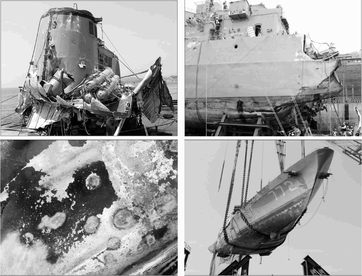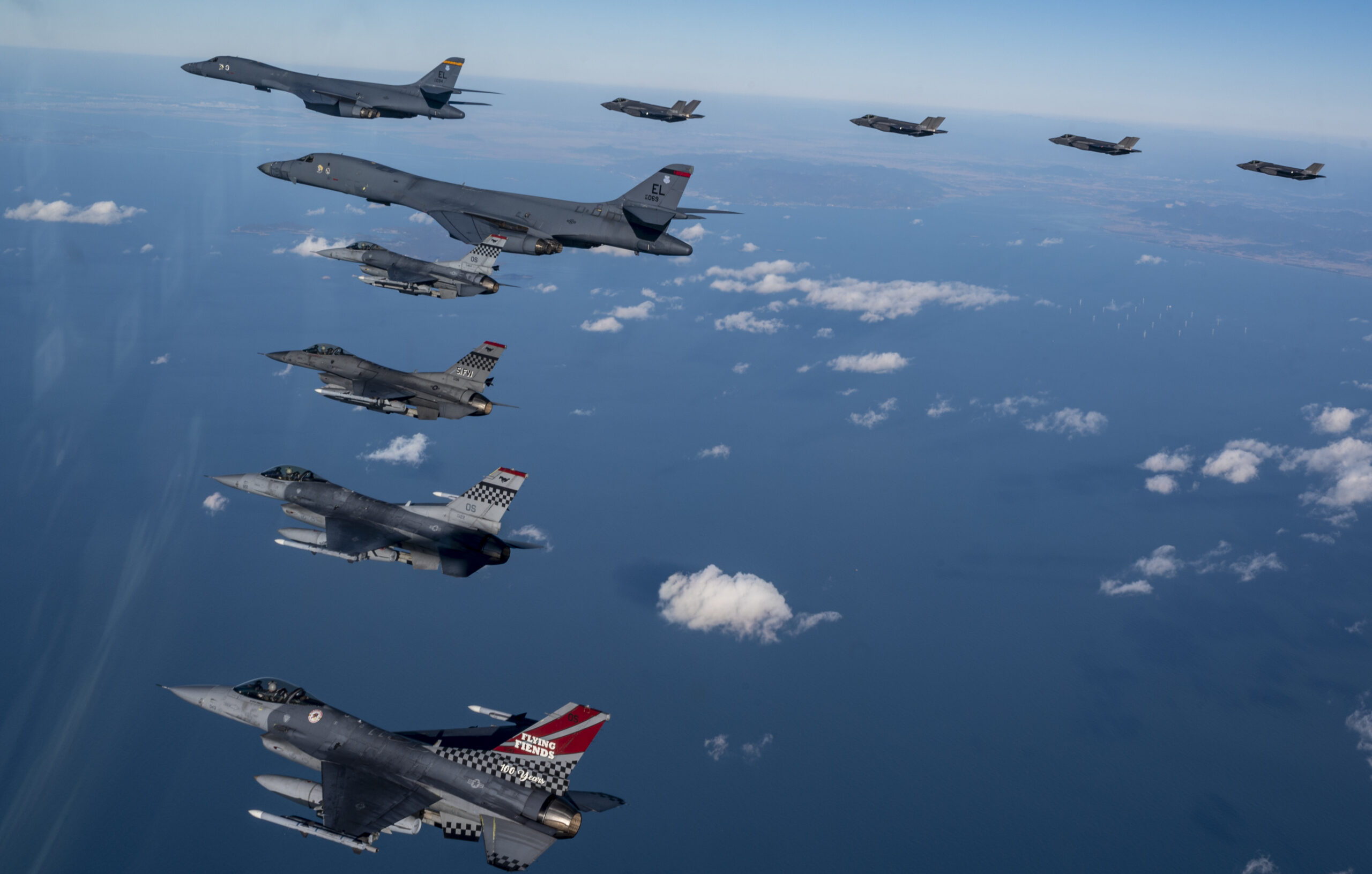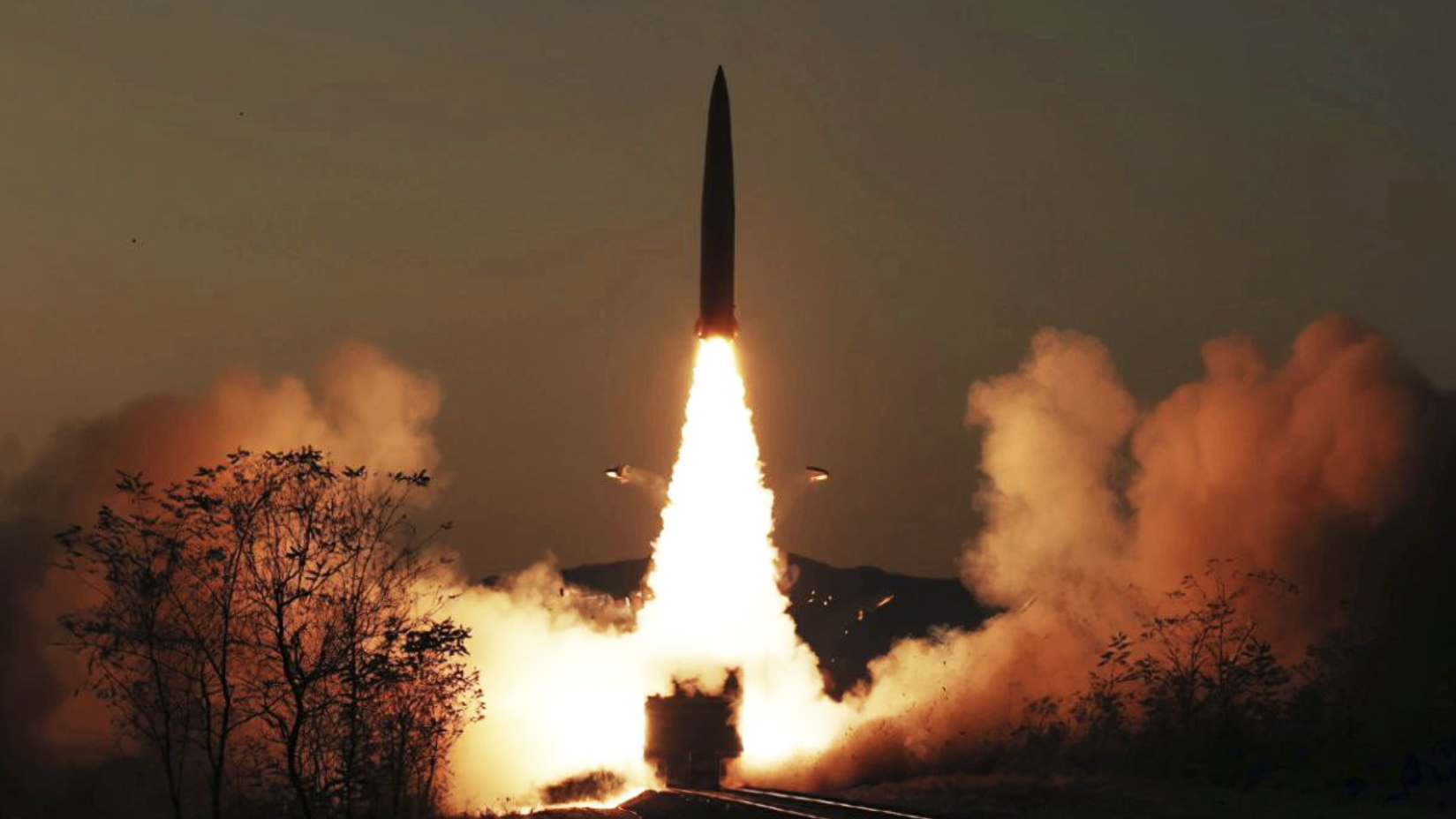South Korea has recovered wreckage from the North Korean missile that was fired across the de-facto maritime border between the two countries last week. The disclosure comes as Pyongyang says that its latest firing campaign — involving nearly two-dozen missiles and more than 100 artillery shells — was intended to simulate an attack on the South and its U.S. ally.
An official from South Korea’s Joint Chiefs of Staff (JCS) today said that an unnamed South Korean ship had recovered debris believed to be part of the North Korean short-range ballistic missile (SRBM) that crossed the Northern Limit Line, or NLL, the disputed inter-Korean maritime border in the Yellow Sea, that serves as a de facto maritime boundary between the two Koreas. The NLL, which was established by the United Nations and is unrecognized by North Korea, also provides a de facto extension of the Korean Demilitarized Zone (DMZ) into the waters on either side of the peninsula but has long been a focus of tensions.

According to Reuters, the rescue vessel was from the Republic of Korea Navy (ROKN) and used an “underwater probe” to recover the missile parts, which are now being studied.
The ROKN operates several vessels that potentially could retrieve objects from the sea floor.
In particular, the single Cheonghaejin class vessel is an auxiliary submarine rescue ship, or ARS, equipped to rescue sailors trapped in submarines, as well as underwater research and mapping support, and the actual recovery of sunk vessels. To help with its mission, the 4,300-ton ship carries a deep submergence rescue vehicle (DSRV) that can operate down to 1,600 feet.

A more modern ARS, the 5,600-ton Ganghwado, was launched last October and is likely similarly equipped. Reportedly, it’s optimized for deep-sea submarine rescue in all types of weather conditions.
Also potentially capable of recovering missile parts are the two 3,500-ton Tongyeong class salvage and rescue ships, ATS, which are primarily concerned with assisting stricken surface vessels. However, they also are equipped with decompression chambers for divers and a remotely operated underwater vehicle (ROV) fitted with robotic arms and cutting gear.


Very little is known in public about the SRBM that landed south of the NLL, although North Korea has developed multiple types in this class, with a notable flurry of testing activity taking place from late 2016 onward. At the same time, it has continued to make improvements to existing, earlier models, which were originally developed on the basis of the Soviet Scud family.
Meanwhile, the more modern KN-23 appears to be strongly influenced by the Russian Iskander SRBM and, since September last year, this weapon has also been fired from adapted railcars, a concept you can read more about here.
North Korean KN-23 test imagery from a prior test:
Earlier this year, too, North Korea test-fired two unnamed SRBMs, in the presence of leader Kim Jong Un. “The new-type tactical guided weapon system … is of great significance in drastically improving the firepower of the frontline long-range artillery units and enhancing the efficiency in the operation of tactical nukes,” the country’s state news agency said at the time. This may well indicate that the missiles were a new type of SRBM intended as a tactical nuclear weapons delivery system.
North Korea itself has been notably reticent about releasing details of the types of missiles used in last week’s tests, which saw the country launch its largest number of missiles in a single day.
Pyongyang did make references to the launch of two “tactical ballistic missiles loaded with dispersion warheads,” suggesting some kind of submunitions capability, as well as a test of a “special functional warhead [for] paralyzing the operation command system of the enemy.” It is not known if either of these types was the weapon that crossed the NLL.
Initially, no photos were provided by its state media. Now that official images have been released, it seems that at least some of them have been doctored to conceal details or otherwise provide disinformation about them and their likely capabilities.
Other North Korean images that purport to show the latest tests instead have their origin in tests from earlier this year.
There has been speculation that among the missiles tested may have been a new type or variant of intercontinental ballistic missile (ICBM), based on the size of a missile seen in some of the photos. Based on the larger nosecone, there have been further suggestions that such a missile may have been launched specifically to test a new warhead section, including multiple independently targetable reentry vehicles (MIRVs).
All this confusion likely makes it even more important for South Korea to retrieve whatever wreckage it can. This is not something new when it comes to studying North Korean missile developments. Over the years, missile debris recovered by the ROKN has yielded some important information on these weapons.
“They [North Koreans] never try to recover the debris as far as we know, which is surprising,” David Albright, president and founder of the Institute for Science and International Security, a Washington-based think tank told CNBC in 2017. “They don’t have many [sea recovery] capabilities and it’s hard for them to outrun the South Korean Navy to get to the debris.”
While many previous North Korean missile tests have fallen in the Sea of Japan, this one would have left wreckage much closer to the South Korean shoreline, making it much easier for Seoul to retrieve. According to reports, the SRBM impacted less than 37 miles off the South Korean coast.
Whatever missile it was that South Korea has now recovered parts from, it could yield potentially valuable data about the progress made by North Korea’s missile program. The frantic pace of Pyongyang’s missile testing is reflected by the fact that at least 48 ballistic missiles have been launched so far this year — a new record.
While no warhead was fitted in this test missile, even small fragments of the SRBM and its components could yield critical information relating to propellants, material science, and guidance systems. These, in turn, could be used to extrapolate details relating to missile range and accuracy and where North Korea’s missile development is headed.
More generally, the significance of this particular SRBM, whatever the type, is that it was the first North Korean ballistic missile of any kind to have landed south of the NLL.
While that is a major development, the area around the NLL has long been the scene of exchanges of fire of different kinds between North and South Korea. Previous high-profile incidents included North Korea’s shelling of the island of Yeongpyeongdo, just south of the NLL, in November 2010. This island is home to a Republic of Korea Marine unit, which was hit by dozens of North Korean artillery and rocket rounds. Two South Korean soldiers were killed and over a dozen were injured.

In general, 2010 was a year of particular tensions surrounding the NLL, with other incidents of North Korean shells falling south of the border as well as the sinking of the ROKN corvette Cheonan, near Baengnyeong Island, killing 46 seamen. The cause of that sinking remains disputed, although there is evidence that suggests that a North Korean submarine was responsible.

Meanwhile, naval skirmishes were fought in the waters of the NLL in 1999 and 2002.
The fact that Pyongyang decided to fire a missile into these waters is especially alarming when combined with the claim that the test last Wednesday was a rehearsal for an actual strike against the South and the United States.
The decision to mount such a significant missile and artillery barrage seems to have been triggered by the joint U.S. and South Korean Vigilant Storm exercise. Involving around 240 aircraft, this was described by North Korea as a “dangerous war drill of very high aggressive nature.”

Exactly how meaningful the North Korean missile barrage was in terms of reflecting a real-world strike against the South is highly debatable, but the rhetoric is indisputable.
According to the North Korean military, the missile drill was intended to simulate attacks on airbases and aircraft, as well as a major South Korean city, to “smash the enemies’ persistent war hysteria.”
Intriguingly, North Korea claims that the November 2 drills included two “strategic” cruise missiles that came down in waters off the South Korean coastal city of Ulsan, although this has been denied by officials in Seoul.
The missile drills were also followed up by a major air exercise, which North Korea claims involved 180 aircraft, although this also cannot be verified and may well be an exaggeration.
Overall, the fallout from last week’s Vigilant Storm and last week’s large-scale North Korean exercises has been significant. Not surprisingly, Pyongyang’s position has only hardened in the wake of the U.S.-South Korean maneuvers, with threats of “sustained, resolute and overwhelming practical military measures” in the future. While that is vague, it should come as no surprise if future U.S.-South Korean drills are met with an equally robust missile firing campaign from the North. Moreover, the latest developments suggest also that the situation regarding North Korea has returned to the status quo after the upheavals of the Trump era. Once again, major exercises, strategic signaling, and missile tests are the order of the day.
Contact the author: thomas@thedrive.com
